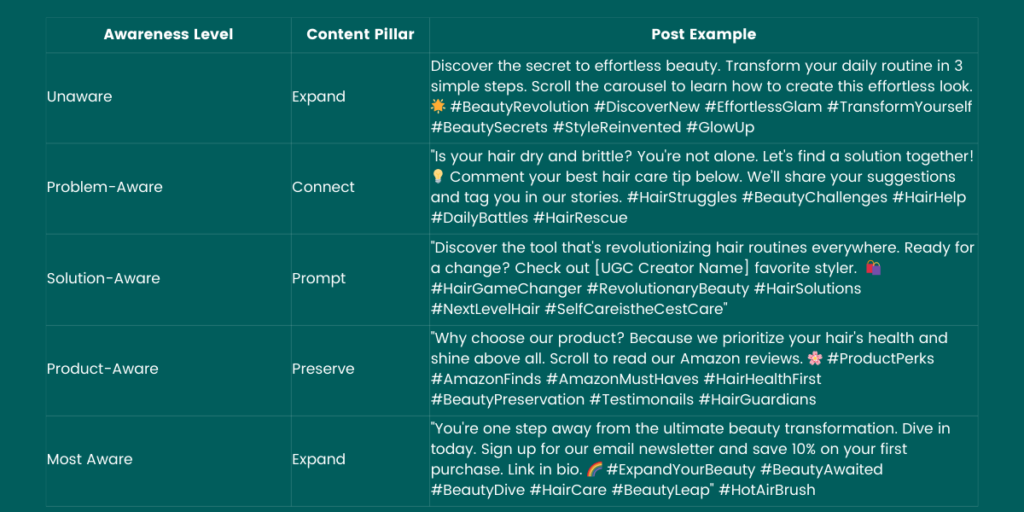Social media marketing for Amazon sellers is a powerful tool to not only expand brand reach but also to foster customer relationships and drive sales. Understanding how to craft a customer journey is pivotal to navigating and succeeding across social media platforms, as it can help Amazon FBA sellers unlock the full potential of their businesses.
In this guide, we’ll explore what a customer journey is, the five essential stages of the customer journey, how to craft compelling social media content with the customer journey in mind, and how to promote your Amazon Storefront on social media. Let’s dive in.
What is a Customer Journey?
A customer journey is the path that a potential buyer takes from the moment they become aware of your brand to the point of making a purchase and beyond. It encompasses all the touchpoints and interactions a customer has with your brand, both on and off Amazon, and is the collective experience that potential customers undergo when they engage with your brand. Rather than a straightforward path, customers often zigzag through various interactions, each shaping their perception of your brand. These interactions can range from viewing an ad, reading an organic post, receiving emails, or even direct physical interactions.
Crafting a well-designed customer journey helps you engage, convert, and retain customers effectively.
Why Is the Customer Journey Important to Understand In Relation to Social Media Marketing?

The customer journey is the backbone of successful social media marketing. It empowers businesses, private label or note, to tailor content, build trust, make data-driven decisions, target advertising effectively, adopt a customer-centric approach, and maximize ROI. In today’s digital era, where social media is central to marketing strategies, understanding and optimizing the customer journey is essential for achieving meaningful and sustainable results, even as an Amazon FBA brand.
What Are the 5 Stages of the Customer Journey?

To craft an effective customer journey, begin with the end in mind. Determine the ultimate action you want your audience to take. While this often revolves around making a purchase, it could be different based on your goals. With a clear objective, dive into understanding your audience. Who are they? What drives their purchasing decisions? What are their expectations from your brand? Focus on buyer psychology instead of straight demographics to understand the people behind the purchase decision–your ideal buyer and audience member.
Stage 1: Unaware: At this stage, potential customers don’t recognize their problem, nor do they know about your brand. Your content should enlighten them about their challenges.
Stage 2: Problem-Aware: Here, they’ve identified their problem but are clueless about solutions. They’re hungry for information. Your content should answer their pressing questions, much like someone searching for remedies for a sudden ailment.
Stage 3: Solution-Aware: They’ve recognized the problem and are exploring solutions. However, they’re still unfamiliar with your specific offerings. This is where success stories, testimonials, and influencer endorsements come into play.
Stage 4: Product-Aware: They’re aware of the solutions and are comparing options. Your content should spotlight why your product stands out.
Stage 5: Most Aware: They’re almost ready to buy. They just need that final push, maybe an exclusive discount or a compelling testimonial. They’ve already seen you on the Amazon marketplace and may have already clicked add to cart.
How to Leverage the Customer Journey to Create Compelling Social Media Content
The customer journey offers a roadmap for brands to craft targeted, relevant, and compelling social media content. By aligning your content strategy with each stage of the journey, you’re not just speaking to your audience; you’re guiding them, ensuring your brand remains front and center in their quest for solutions. For Amazon FBA sellers, leveraging the customer journey isn’t just a strategy; it’s the key to building lasting connections in the digital realm.
Try these content pillars:
#1 Expand (Grow your audience)
- Unaware: Introduce your brand and its values. Use broad-reaching content to attract a wider audience
- Most Aware: Reiterate the value of your product, emphasizing its unique selling points to encourage final conversions.
#2 Connect (Resonate with your audience)
- Problem-Aware: Address common problems your target audience faces, showing empathy and understanding. Engage with them by asking questions and prompting discussions.
#3 Prompt (Inspire your audience to act)
- Solution-Aware: Introduce your product as a solution to the problems they’re facing. Use calls to action to guide them towards learning more about your product.
#4 Preserve (Retain your audience over the long term)
- Product-Aware: Highlight the long-term benefits of your product, emphasizing its durability, effectiveness, and value for money. Engage with existing customers, asking for reviews and feedback.
Create a spreadsheet in Google Sheets or Excel and input your social media content strategy. This will help you organize your content effectively, ensuring you address each awareness level with the right content pillar.

Revisit your spreadsheet, refining your content pillars with your newfound knowledge of each awareness stage. The content pillars you choose should mimic your customer journey. Aligning your content strategy with this journey ensures you’re always connecting with the right people at the right time.
How do I Promote my Amazon Business on Social Media?
Leveraging your existing social media presence is a cost-effective and powerful way to drive external traffic to your Amazon product listings. When embarking on social media campaigns to market your Amazon products, it’s essential to begin by focusing on your most active channels. Here are some strategies to help you maximize the potential of social media promotion for your Amazon store:
1. Start with Your Most Active Channels: The effectiveness of social media marketing depends on your engagement and activity on the platforms. Instead of trying to determine whether Instagram or TikTok is the better option, focus on the channels where you are most active and have a substantial following. Begin there, and gradually expand your reach as you grow. Remember that some channels will be better at organic growth, while others may offer higher conversion.
2. Utilize Interactive Posts: To drive your social media followers to your Amazon product pages, create engaging and interactive posts. Consider using short videos, carousel ads, discount coupons, and contests or giveaways to entice your audience to take action and visit your Amazon listings. Instagram stories for example offer a great way to engage your audience. Try polls, memes, questions. Anything to inspire your audience to engage with your brand. Promote using links to your Amazon Storefront, but don’t over do it.
3. Collaborate with Influencers and Affiliate Marketers: If you lack a significant audience of your own, collaborating with influencers, UGC creators, and affiliate marketers can be a game-changer. Bloggers, vloggers, and aspiring content creators can help expand your reach and drive traffic to Amazon through their custom affiliate links, earning a commission for each customer purchase.
4. Optimize Your Storefront: While driving external traffic to your Amazon storefront is crucial, it’s equally important to optimize your storefront on the platform. Ensure that your storefront offers scroll-stopping graphics, compelling headlines, and several product links customers will love. A responsive storefront helps set you a part as a trustworthy brand, and can massively differentiate you from generic sellers. Pro Tip: Work with your Amazon PPC agency to craft a storefront ad strategy to promote your products and increase visibility and traffic.
Social Media Sells!
Understanding the customer journey isn’t just beneficial—it’s pivotal. Each stage of the journey represents a unique opportunity to connect, influence, and build trust. By aligning your social media strategy with the intricacies of this journey, you not only meet your audience where they are but also guide them seamlessly towards conversion. It’s about crafting a narrative that resonates, providing value at every touchpoint, and, ultimately, fostering brand loyalty. In the age of digital distractions, a well-mapped customer journey on social media becomes your compass, directing your brand toward sustained success and growth.
For Amazon FBA sellers, it’s not just about selling a product; it’s about curating an experience, and the customer journey is the blueprint to that unforgettable experience. Are you feeling lost and overwhelmed with your social media marketing efforts? We can help. Contact us today for a free Instagram or Facebook audit to help align your marketing goals.

LIKE THIS ARTICLE?